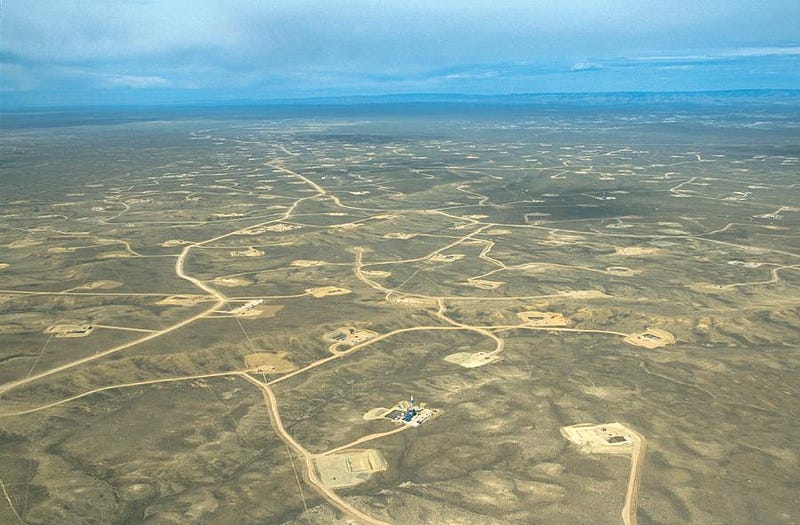The Chevy dangles my keys from its ignition the way a puppy dangles toys from its maw, playing a frustrating game of keep away. The doors are locked. I’m in the toolbox, looking for anything to get into the cab and out of the Ideal Market parking lot in McDermitt. When Hanley Jack offers his assistance I haven’t seen him yet, and I hit my head when startled. Hanley is a man of the Fort McDermitt Paiute and Shoshone, whose brutal relationship with manifest destiny is best told by Paiute Sarah Winnemucca.Hanley tells me he can get into the truck, because he saw a coat-hanger in the dirt behind the store a few years ago. He goes and looks a while, but returns empty-handed. Smokes a cigarette with me, inspects my unsatisfactory tools, and resolute, he goes back to the dirt, and returns with the coat-hanger that I no longer believed in. He uses it and my pocketknife to deftly open the truck. He slices his finger, but is unfazed because it’s “far from the heart.” I give him a band-aid and buy him 3 packs of Marlboros. We talk for a minute, and he tells me, among other things, that there is an old mercury mine and uranium deposit nearby. That was in May 2001. I never see Hanley Jack again, but I did hear of him from a friend that worked on the rez for a while. Today, he is “whereabouts unknown”.

It’s the uranium that reminded me of Hanley Jack. First Peoples, especially the Navajo, have a tortured relationship with uranium mining. Thousands of Navajo were hired to dig millions of tons of uranium ore out of the Colorado Plateau during the 1940s-1970s, fueling a culture dependent on mutually-assured destruction for its survival while unknowingly polluting Navajo people and their homes. The military detonated hundreds of nuclear weapons created from uranium in the Western Shoshone Nation, which includes Nevada, during the 20th century. Today, open uranium pits remain on Navajo land, continuing to risk poisoning people, water, and landscape. Two 1950s uranium mines in eastern Oregon, near Lakeview and in Northern Paiute ancestral lands, sat as radioactive unmitigated disasters for 40 years before being declared Superfund sites in the 1990s. This history of uranium mining in the interior West, its relationship to First Peoples and the landscapes that shaped my life, is why I bothered to pay rapt attention to a peculiar conspiracy theory and false narrative surrounding the “Oregon Standoff” at Malheur.

The Malheur uranium conspiracy theory generally posits that the Hammonds, an Oregon ranching family with an unwitting role in the Oregon Standoff, were being imprisoned and forced from their land because the Bureau of Land Management, or Hillary Clinton, sold the rights to the uranium under their ranch to Russia, perhaps to fund her campaign for president. (Warning: some links in that sentence lead to the “Beyond” part of Bed, Bath, and Beyond.) So, because Hillary-Clinton-Russia-uranium-land-grab, armed men were perfectly justified in taking the 187,000 acre Malheur National Wildlife Refuge for 41 days, terrorizing locals, and leaving behind explosives, human feces, desecrated Burns Paiute heritage, and maybe booby traps.
The uranium conspiracy theory spread far and wide via social media, accumulating wobbles and dents faster than an eastern Oregon sedan. It was used to justify the standoff by occupiers and by onlookers. It appeared inletters to the editor in places like The Dalles, and in internet comments.Conspiracy theories seem to attract a particular kind of consumer that is hard to pin down, but I’d rather not stereotype. In the uranium conspiracy, the Malheur occupiers are thus cast as heroes, saving rural America from heartless exploitation by politically-connected global energy companies.

Image from 1969 USGS report on mineral resources of Oregon (government work: public domain).
Like most conspiracy theories, there is at least one strand that’s factual, that anchors the rest of the wound-up mess to reality, so that it doesn’t float away into whatever ether surrounds mental illness. There is uranium in eastern Oregon. There is a foreign company with a mining claim - the one that Hanley Jack told me about, although no one has yet dug the pit - in the McDermitt Caldera. The Clinton Foundation did accept a donation from a Russian energy company in 2010, at the same time the federal government was considering approving foreign investment in US uranium mines from that same Russian company. That strand connects the conspiracy theory to a crazy-train-rocket-ship bound for outer space. But most of the strands in this conspiracy theory’s connection to the Malheur occupation are unqualified bullshit.

Map via Bureau of Land Management. There is one only one uranium project reported on federal lands in the entire state of Oregon, and it is about 75 miles from the Hammond ranch (government work: public domain).
Which ones? First, there is no uranium under the Hammond ranch. There isuranium in eastern Oregon, just not within about 75 miles of the Hammond ranch. Confusingly, perhaps, Malheur National Wildlife Refuge and the Hammond Ranch are in central Harney County, while McDermitt Caldera is in southern Malheur County. Second, the patriarchs of the Hammond family were imprisoned for arson, including one burn intended to cover up deer poaching, for which there is ample evidence and testimony. Hillary Clinton didn’t get the Hammonds’ non-existent stash of uranium with a Jedi mind trick that forced them to light fires on public land, endanger firefighters, andthreaten to frame a BLM employee. The Hammonds were, perhaps, unfairly punished because of mandatory minimum sentences - which seem to be all the rage when they punish urban people of color, but evoke a different kind of rage when they infringe on white privilege. Third, if a private company actually owned mineral rights under the Hammond ranch, it would probably just do what most mining companies do under perfectly normal American law: screw over the surface owner, whether it’s the public or a private party. And then when things go south or unprofitable, public or private landowners are left covering the cost, as in the waning oil and gas boom in the west.

The Jonah Gas Field in Wyoming (photo: skytruth).
How the west was “won”, and how the west was tossed
Following colonization by Europeans, the West has undergone countless resource exploitation booms and busts that leave behind legacies of riches for some, rags and sickness for others. Gold, grass, coal, oil, gas, timber, uranium, silver, copper, the list goes on. When the wolf finally comes for each of these booms, we are all left with a legacy of human and environmental damage, while the companies that profited are protected from liability by their political and economic power. In the Navajo nation: uranium mines. In Wyoming: gas wells and ranchers. In Libby, Montana: an asbestos mining boom, which provided jobs for a spell, but left in its wakemesothelioma and publicly-financed Superfund cleanup. The owner of the Libby mine, W.R. Grace & Co., shielded itself from civil liability by transferring funds to subsidiaries and declaring bankruptcy, and closed at $69.34/share on the New York Stock Exchange today.

If this outrageous approach to human rights and natural resources is really what some of the Malheur insurrectionists and supporters are against when they spin the uranium conspiracy into the tragic notion of usurping people from land for a globalized resource extraction industry… I might have something in common with these people. An odd hope stirred during the Malheur boondoggle when I saw in Flint, Michigan Milita members found common ground with Michael Moore following conscious poisoning of a city by politicians. But I want to know where these protestations were during the coal-bed methane gas extraction boom in the west, while landscape and community-changing effects spread far and wide. Terry Tempest Williams pulled a DeChristopher and bought Utah public land gas leases yesterday for less than $2/acre. If an issue that’s behind the Sagebrush Rebellion Redux was truly protecting ranchers from being usurped by the locusts of globalized resource exploitation, a militiaman could join Terry Tempest and protect a square mile of a Utah public land rancher’s lease for the low price of an AR-15.

Except that’s not really one of the issues behind the new Sagebrush Rebellion. The people that were attracted to the Malheur insurrection, in person or online, that believed they were fighting for rural America against interests like foreign uranium mining conglomerates, have been duped and exploited just like the Navajo that dug uranium in the 1950s. This movement villainizes federal tyranny or environmental law and calls for No More Wacos, but I can’t imagine anyone hopes for Libby or Flint instead. Yet, no one in a leadership position during the occupation seemed likely to protect people like the Hammonds from something like the boogeyman of Hillary’s land grab for uranium unicorns. Ammon Bundy and his crew claimed they wanted to mine, log, and graze Malheur - how, it’s unclear, given its current grazed state, and the general lack of minerals or trees on the refuge. But this was never about the Hammonds, and it was never about uranium - at least not keeping uranium in the ground.

Nevada Legislator Shelly Shelton with son-in-law and grandchild at 2014 Bundy Ranch Standoff. (Photo: Steve Marcus)
The connections between the insurrection and dangerous right-wing groups, religious extremists, and white supremacists have been exposed. The real financial and political interests behind the Malheur insurrection have been clearly revealed by their own activities over the last 6 weeks. They include western state legislators and federal representatives that have an agenda of privatizing public lands so that it would be easier for companies to usurp people from the land - ranchers, dirt-bikers, dirt-bags, or First Peoples - to make way for extractive industries. In the end, the uranium conspiracy theorists and I don’t really have anything in common. It seems in reality, they were simply lied to, fooled, or tricked into dangerous work and rhetoric that didn’t benefit them at all. I hope they find that strand of the conspiracy theory, and pull hard on it.
[Ed. note: This is the third of a three-part series. Part I is here and Part II is here.]
Daniel Barton is an Assistant Professor of Wildlife Biology at Humboldt State University, in Arcata, California. He hopes to work with people he used to disagree with together on environmental justice someday. Uncredited photos are (c) Daniel Barton 2016. Twitter: @oreothlypis


















